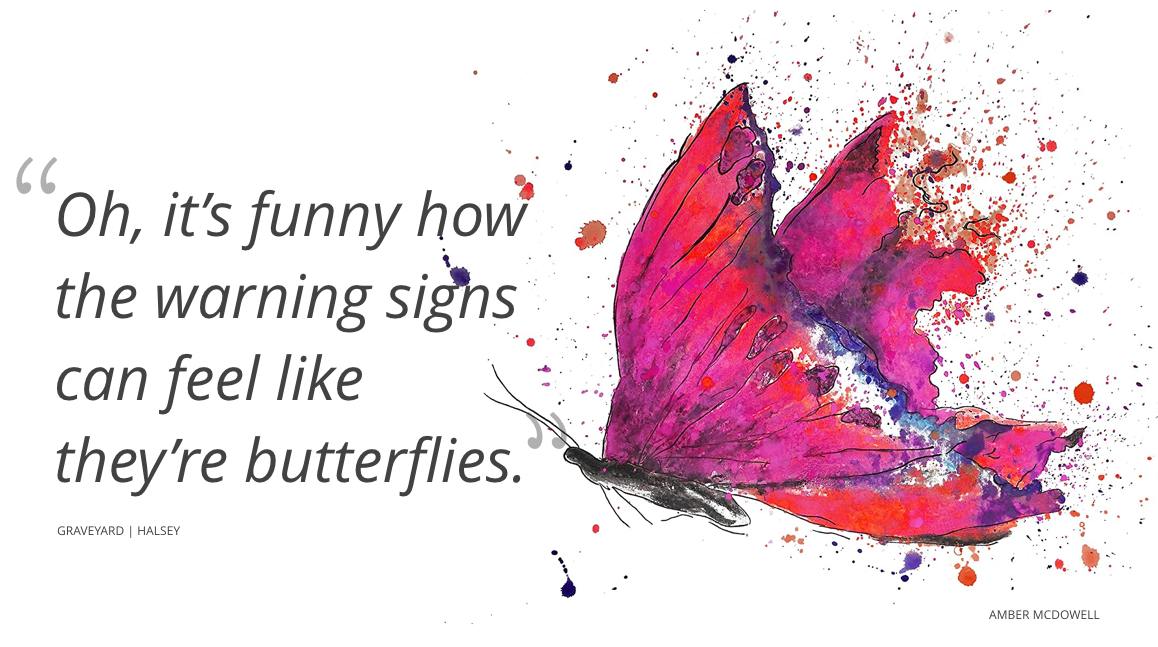Marco Bravo

If you don’t know, ask – if you know, share! ~ opensource mindset
![]()
➠ "We may not have control over our circumstances, but we do have control over our minds"
➠ What do I want to do next?

Navigating Uncertainty
by Marco Bravo

Uncertainty creates tensions and fears, emotions and resistance.
Ways of being are the mindsets, behaviors, and belief systems we have as individuals.
Ways of doing are the actions our companies operationalize so we can do the work.
The foundation of ways of being can be taught with these five tools:
[1] How to find our center in our values and integrity
Rather than adaptability and making a difference, the values of connection and joy spoke louder to who he authentically is and what he wants to cultivate in his life as the human being he’s becoming.
[2] How to leverage vulnerability and boundaries
When humans and teams are struggling, a little broken, and finally willing to admit they could use some help, I start with a real talk session by asking what Jerry Colonna calls the three magic questions:
- What am I not saying that needs to be said?
- What am I saying that’s not being heard?
- What’s being said that I’m not hearing? (These are the things I can’t bear to hear because I may have hurt, disappointed, or caused someone pain.)
[3] How to engage with the world without our armor
Learning to engage with the world without our armor starts with the practice of curiosity:
- What is the self-protection I most commonly reach for?
- What am I looking to protect myself from? What can I try instead?
- How does my armor affect my work and relationship with my colleagues, my team, and our customers?
- How can I learn to stay in the discomfort of being real and true to who I am rather than solving to escape what’s really here for me to face?
[4] How to manage our emotions and reactions
We can begin building our self-inquiry muscle by simply noticing these signs and acknowledging something may be here for us to be curious about. We can also examine how we show up when met with uncertainty:
- Where do I use emotions or armor to get what I want instead of the vulnerability of asking for what I need?
- What about when I’m in the grasp of emotion? What do I notice in my body? What emotions typically come up? What stories do I craft?
- What are the signs I’ve disregarded my own values and boundaries, which make it harder for me to manage my reactions and emotions?
- And one of Jerry Colonna’s most powerful questions: how have I been contributing to the conditions I say I don’t want?
[5] How to build the courage to do hard things
The most important ways of being tool we can cultivate in managing uncertainty and complexity is the courage to belong to ourselves.
We cannot give to others what we do not have. Building this kind of courage is the journey of our lives, but we do it every time we face something that requires us to be brave.
“When we’re brave enough to admit our fears, uncertainties, and doubts, we open the gift box.” ~ Jerry Colonna
In parallel with ways of doing, ways of being is the gateway to sharing power with the humans in our companies so we can craft the systems and conditions that create the best possible version of our organizations.
Ways of Doing Starts With Being
These ways of being conditions — the willingness to be vulnerable, to acknowledge fears and feelings, get curious, ask for what we need, engage with honesty, set and adjust boundaries, intentionally practice getting it right, and learning to share the load — are what give humans and teams the opportunity to do their best work at work and in uncertainty.
With these conditions, we can shape our ways of doing: the systems, processes, and pathways we use to operate as a business, navigating the constant and inherent variability in our environment.
Tool Kit for Ways of Doing
There is no step-by-step, linear system or process for navigating uncertainty or operating in complexity. It doesn’t — and can’t actually — exist. But this doesn’t mean we have no structure, say yes to everything, or pour fuel on the chaos. There are intentional practices we can integrate into our organizations that help us create the conditions we need to thrive.
With ways of doing practices, we can learn to turn into uncertainty. We can learn to constantly steer, and manage the present. We can learn to find our way by making small moves, continually experimenting, learning, and growing.
Operating rhythms teach us how to hold the weight of the work, the struggles, and the decisions, together as a team. They are the grounding element for operating in complexity and uncertainty.
Operating rhythms can come in many flavors, but work best with these bones:
[0] Daily stand-up meeting - Achievements, Blockers, Clarifications, toDo, notEs, Funny, Goals - What did you do yesterday? What will you do today? Are there any impediments in your way? - These meetings are strictly time-boxed to 15 minutes (though this may need adjusting for larger teams). This keeps the discussion brisk but relevant.
[1] A weekly action meeting where the purpose is to identify and organize the work so we can be autonomous and have flexibility and freedom in doing our work. Action meetings also create the space to process tensions, fears, feelings, and ask for what we need. These can be done in 60 minutes or less.
[2] Ad hoc deep work sessions — when relevant and necessary — to work uninterrupted, design, or solve problems together. Typically these sessions are 90 minutes or more.
[3] Weekly, bi-weekly, or monthly retrospectives to learn from the work — and the way we work — so we can improve and grow. Retros can range from 60–90 minutes.
Action meetings manage the present while we share the load and steer weekly towards desired outcomes. They provide the opportunity for teams to get clear about who’s doing what and where work is stuck.
Most importantly, action meetings give us the space to practice ways of being by processing the tensions, fears, feelings, and emotions that surface constantly in uncertainty and complexity.
GUIDING PRINCIPLES
As humans, we don’t like to hang out in the uncertainty of not knowing. We like to have answers, security, and safety.
That’s why we make rules.
[1] Small moves over big moves + [2] consent over consensus
As teams, we can ask ourselves:
- Are we making small moves and steering intentionally and often toward desired outcomes?
- Are we iterating, experimenting, learning, and using that information to steer and make small moves?
- Are we breaking down big things and big reveals into small, safe-to-try pieces so we can learn?
[3] Less over more
When we do everything, we do nothing well. The key to mastering the less over more principle is integrating a proper operating rhythm, co-creating a prioritization process, and getting clear about why we find it so difficult to set boundaries and say no.
Our job is to be intentional about how we spend our time and focus. Rather than digging in with our agenda, we can be in service to the team and company by asking ourselves these questions:
- Does this bring value to the business? Does this bring value to the customer? Why/how?
- Does this help us achieve our outcomes as a team? As a company?
- Do we have the time/money/resources to do this work?
- What are we willing to sacrifice in order to do this work?
- Are there any other teams we need to connect with before we consider/say no (or yes) to this work?
As a team, practicing less over more, can start with these questions:
- Are we prioritizing the work that is important to our team and company’s purpose?
- Are we setting boundaries and limits with how much work we can handle so we can do it well?
- What’s really getting in the way of us saying no or having a boundary with leaders and teams around us? What would happen if we do? What would that give us?
- How can we have that conversation — with our team and others who appear to be applying the pressure — about where we’re spending our time to create value for the company and gain perspective and understanding
- How do we redesign the environment we work in to be less like a pressure cooker and more conducive to collaborative teaming, creativity, and innovation?
- How can we adjust our operating rhythm so we are making space to practice less over more?
[4] Experimentation over planning
When we’re brave enough to admit we don’t know the answers, we surrender to the fact that we’re allowed to get it wrong, and that experimentation is one of the best ways to move through uncertainty, we find ourselves in a really good place.
Trading planning for experimentation shifts our mindset from being knowers to being learners. We can’t predict the future, so pretending we have a plan to get there just reinforces the need for armor required to navigate the uncertainty. We can drop the pretending and use experimentation to find the answers together.
With experimentation, our teams can consider questions like:
- Where do we bump up against our systems, processes, and rules that may be inhibiting trust, connection, conversation, creativity, and innovation
- Where are we building pathways around the systems we have in place?
- Where are we bumping up against the same tensions over and over? What could we practice for a short time to learn and shift the system?
- With the tensions we’ve named, what small moves and experiments can we try to shift what’s getting in our way?
- What is our ideal outcome with the experiment? What are the stories we’d like to hear?
- What is standing in the way of these outcomes? How could we reduce or remove these roadblocks during the experiment?
- What other teams do we need to do our work or that are impacted by our decisions?
It’s about creating the conditions for us to constantly optimize and do our best work together.
Choosing to be Warriors
“A warrior accepts that we can never know what will happen to us next. We can try to control the uncontrollable by looking for security and predictability, always hoping to be comfortable and safe. But the truth is that we can never avoid uncertainty. This not-knowing is part of the adventure.” ~ Pema Chödrön
We need to invest in both ways of being and ways of doing because these ways of working are required to navigate uncertainty, complexity, and become the best versions of ourselves as humans.
Suffering is Optional
If we can see our lives as adventures where everything we’re faced with — especially the hard stuff — is an opportunity to grow, we can learn to “be grateful for whoever comes, because each has been sent as a guide from beyond.”
Now, when uncertainty rears its head, I know that fear, irritability, and blame will not be far behind. I know I may feel sadness and overwhelmed and need to cry in the chair in the corner of my bedroom. I know how to ask for the space I need from others, and get the comfort I need from myself.
And now that I know this, I can sit with my fears and sadness rather than using them as weapons. I can move through the emotions of feeling vulnerable and uncertain and make decisions from my center, not from my armor. I can be incredibly compassionate with myself.
References:
tags: personal - improvement - uncertainty